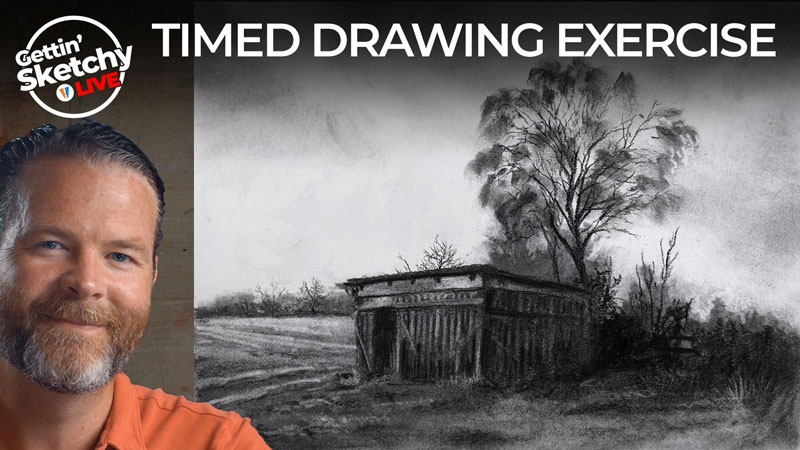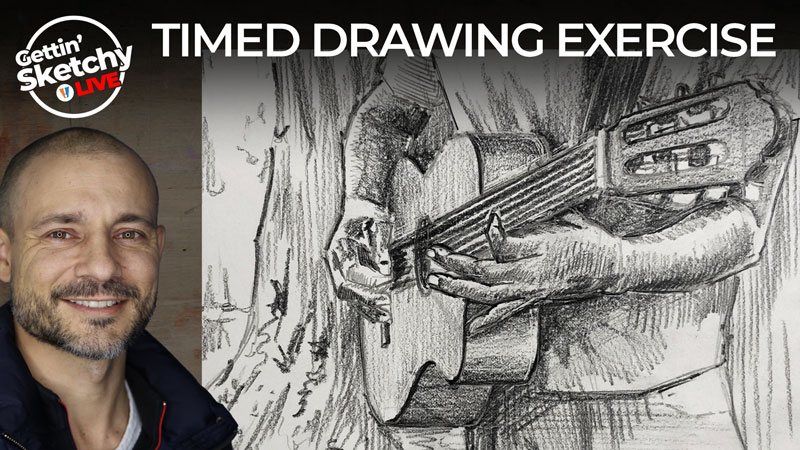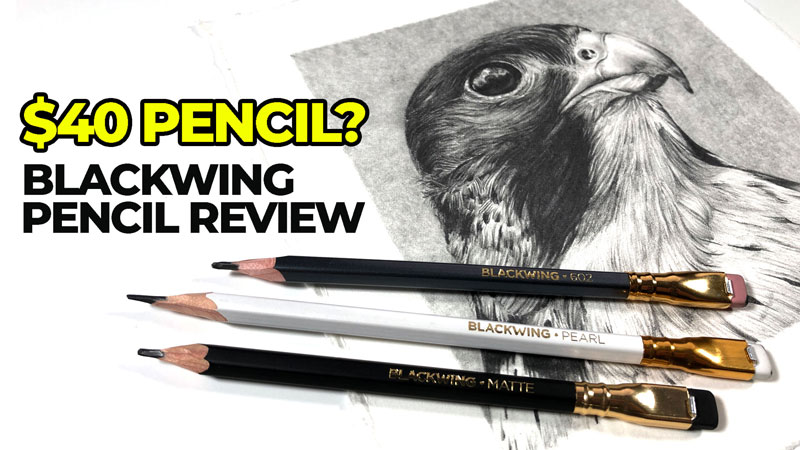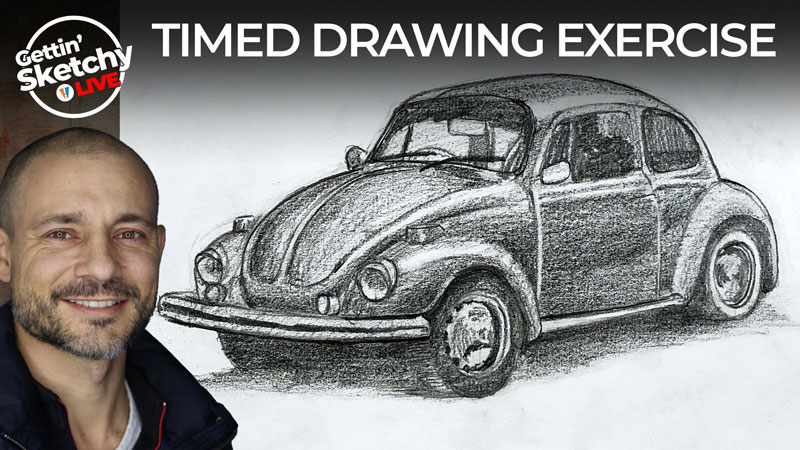Gettin’ Sketchy – How to Draw Gears with Pencil – Season 3 Episode 8
This episode aired live on YouTube on March 10, 2021.
In each episode of Gettin’ Sketchy, we create a quick sketch of a subject using a variety of drawing mediums within 45 minutes. Each episode is broadcast live on YouTube. While the goal is to produce a sketch, we also include drawing instruction and “lively” discussion.
In this episode, Ashley attempts to draw a challenging arrangement of gears with graphite pencil. As you may expect, this subject presents its own set of challenges.
Here’s a look at the completed image…
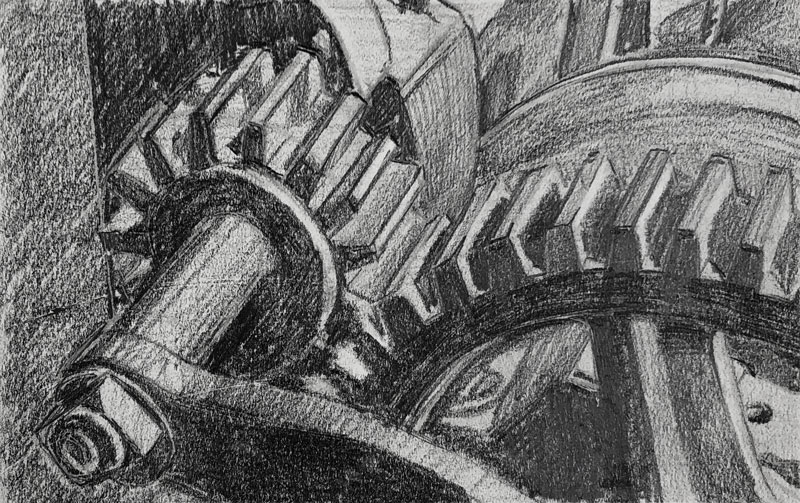
Breaking Down the Complexities
This subject is not lacking in complexity. It’s easy to get overwhelmed when approaching a subject such as these gears. On top of the perceived complexity, there’s the requirement of accuracy. In order for gears to function properly, they must be precise. And if we are to draw them, we must also be precise with our drawing.
On the surface, this may seem like a daunting task. But, if we think in terms of shapes and larger forms, this subject is much easier to capture in a drawing.
When most of us are new to drawing, we think that we should focus on the contour lines. Contour lines are simply “outlines”. And while contour lines are important, it’s not always the best place to start a drawing. When we start a drawing with contour lines, there’s more room for inconsistencies and errors. Plus, beginning a drawing in this manner is inefficient and slow.
If we focus instead on the overall form or shape of the subject and then break down the details, the process of drawing is much easier.
So, in this case, instead of drawing the teeth of each gear from the start, we should concentrate on capturing the overall circular shape of each gear and ignore the details of the teeth until the major shape is in place. Once the overall shape is in place, the teeth of the gears can be “carved” out.
This is exactly how Ashley approaches this drawing and is one of the major reasons the drawing was successful.
This process is usually referred to as “construction” and is covered more deeply in the following lessons. Some of these lessons require membership…
- Drawing Basics – Construction
- 25 Days to Better Drawings: Drawing with Shapes (Membership Required)
- 25 Days to Better Drawings – Drawing with Forms (Membership Required)
- Drawing Bootcamp (Membership Required)
Here’s Some Perspective
Another complexity that should be considered with this subject is perspective. There are several different forms of perspective and each is designed to aid in creating the illusion of space within a drawing or painting. There are three forms of linear perspective and another form of perspective referred to as “atmospheric perspective”.
Linear perspective uses lines, horizon lines and vanishing points to create the illusion of depth while atmospheric perspective utilizes changes in color temperature and value to communicate depth. It’s not unusual to find both linear perspective and atmospheric perspective used within the same image. With our gears, only linear perspective is used.
While linear perspective is a rigid method of drawing with precise lines, we don’t always have to be so rigid with our drawings. We just need to keep in mind the rules of linear perspective and make sure that our drawing makes sense with these rules in mind.
In this drawing, Ashley considers linear perspective without drawing receding lines that extend all the way to the vanishing points. As the teeth of each of the gears are carved out of the larger form, the direction of the these lines are created with a vanishing point in mind, rather than drawing the vanishing points and using a ruler to draw lines to these vanishing points. The result is a convincing image that makes sense within the pictorial space. In this case, it could be argued that two-point perspective is utilized in the drawing.
Linear perspective is a fundamental of drawing. The basics of perspective are covered in the following lessons. Some of these lessons require membership…
- One Point Perspective
- Two Point Perspective
- Three Point Perspective
- 25 Days to Better Drawings – One Point Perspective (Membership Required)
- 25 Days to Better Drawings – Two Point Perspective (Membership Required)
- 25 Days to Better Drawings – Three Point Perspective (Membership Required)
Shading the Drawing
Ashley spent the bulk of the allotted time mapping out the form of the gears and then carefully drawing the contour lines with linear perspective in mind. It was only in the last few minutes that the shading was added and the drawing came to life.
Since this drawing required attention to accuracy, this is not surprising. But what may come as a surprise is how fast the shading was added and how convincing the drawing became after the values were developed. This is a testament to how important value is in art. Value is the darkness or lightness of a color and is one of the seven elements of art. Value helps to communicate the light within the scene, surface textures, and the illusion of form.
Shading can be done quickly with good results or the artist can work slowly and gradually develop the values for superior results. Obviously, if a more realistic appearance is desired, then the development of the values requires a slower approach.
See Also: The Basics of Shading with a Pencil
Ultimately, what’s most important is that a full range of value or tone is developed in the drawing. We see the world in a full spectrum of values which includes the darkest darks and the lightest lights. Therefore, it’s important to include this in our drawings and paintings. As you can see, a looser and quicker development of values can be effective – especially with a quick sketch like this.
Photo Reference
The photo reference for this drawing comes from Pixabay.com. The original image was cropped, the color was removed and the contrast was enhanced.
Here’s a look at the photo reference…
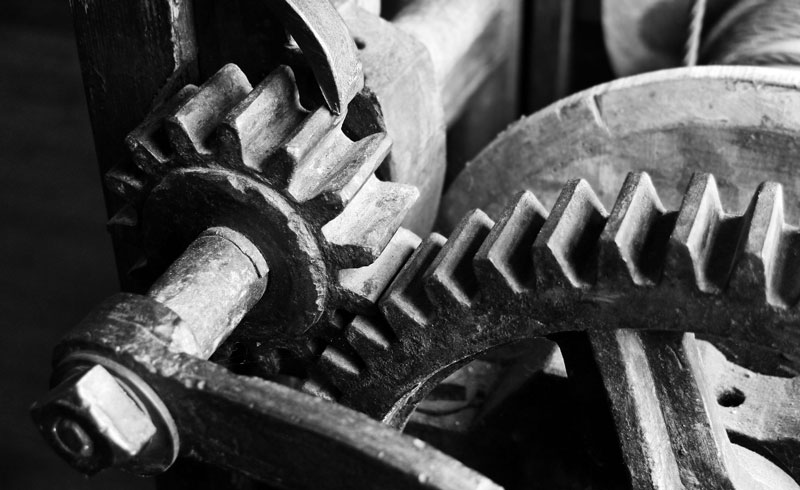
Timed Drawing of Gears – Conclusion
Each drawing that we create should be considered as a learning experience. Even if we spend a short time on a sketch, we still use the same “artistic muscles” that we use on a finished, more polished drawing. This is one reason why sketching is so important to your artistic development. Not all of us have the time to create elaborate drawings that are fully refined and polished, but we all can find 45 minutes to develop our observation and mark making skills through sketching.
If so, join over 36,000 others that receive our newsletter with new drawing and painting lessons. Plus, check out three of our course videos and ebooks for free.


